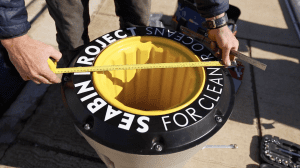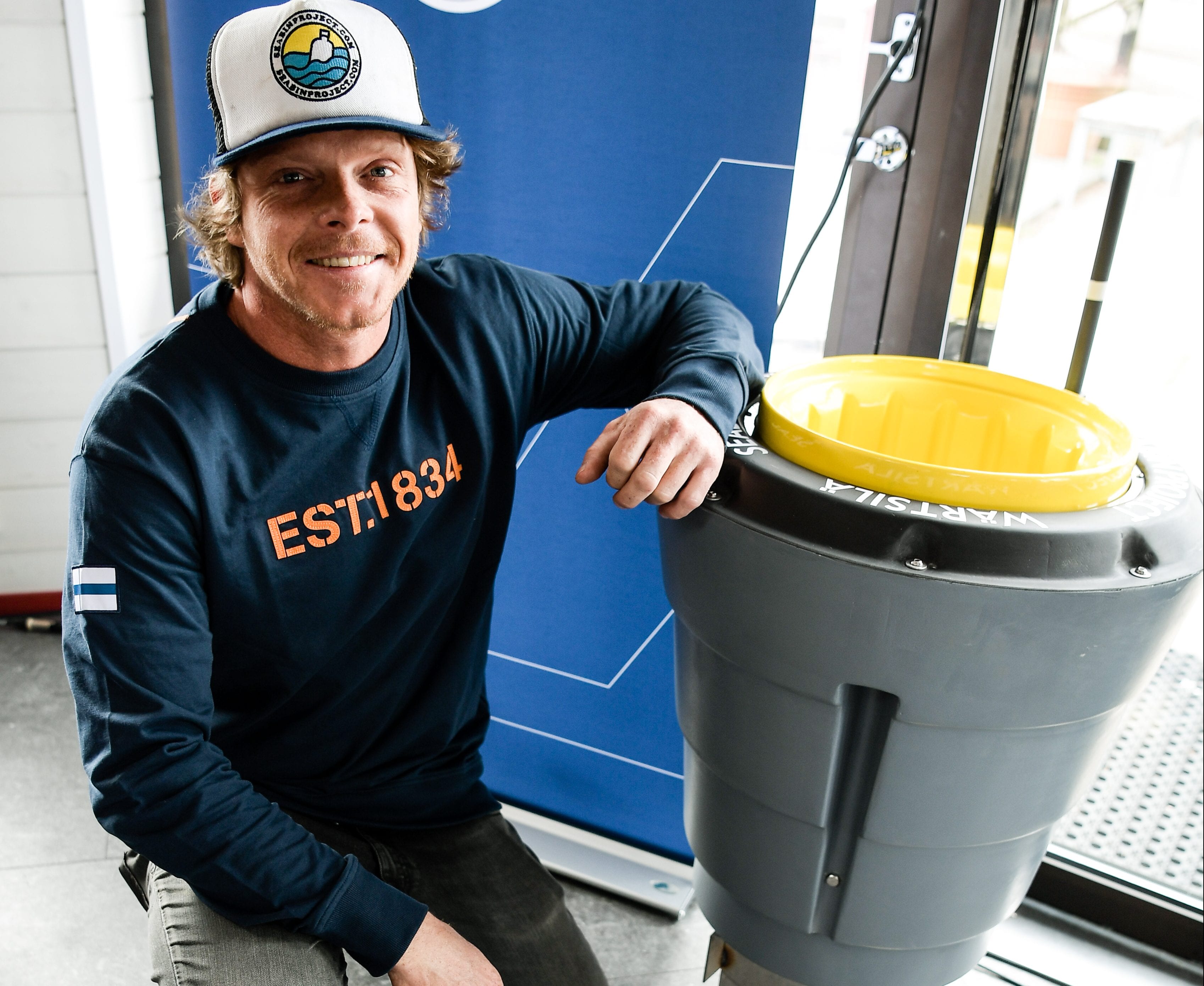PETE Ceglinski is battling vicious jet-lag. The Seabin co-founder has just returned to Palma from San Diego, where his revolutionary sea-cleaning receptacle is being trialled.
And although bleary-eyed with fatigue, Ceglinski, along with fellow Seabin creator Andrew Turton, has a very clear vision: to battle ocean pollution.

“Plastic in the sea is no good for anyone,” he says, over a much-needed coffee. “We end up eating it. Even if you went to some beautiful tropical island, which looks like pristine and amazing, when you get up close there’s plastic all over it.
“It’s a pretty insane situation we have got ourselves into and we have nobody to blame but ourselves. Plastic is such an amazing thing, but we’re not recycling or reusing it anymore. Basically, we’ve been trashing the place for 60 years.”
Taking a stand in the global clean-up operation are Seabin’s Australian crew. This small band of surfers – the team is ‘Three and a half’ strong – are making big waves in the eco-fight with their floating rubbish bin, which sucks in rubbish from waters around marinas.
So far, Seabin is being trialled in six locations, including Palma’s Port Adriano, Helsinki, France and now California. An agreement has been struck to trial more Seabins in the Balearic Islands.
Commercial sales of the bin are due to start in three months. But already global interest has been phenomenal.
“We’ve had interest from every single country in the world that has a marina,” says Ceglinski.
Among their supporters are Safe Harbor Marinas, the world’s largest marine operator with 64 locations, who have now partnered with Seabin.

It’s a success story born out of the Seabin crew’s lifelong love of the ocean. Growing up in eastern Australia, Turton, Ceglinski and Seabin project manager Sascha Chapman were natural water babies.
An industrial designer by trade, Ceglinski married his technical nous with his respect for the ocean, spending four years creating the Seabin prototype with Turton.
“At first, nobody paid attention,” say Ceglinski. “All the environmental groups and people we thought would support us just blocked us because we were a conflict of interest.”
With Australian company SMS backing the project, the friends launched a crowdfunding campaign through Indiegogo in 2015, which raised €150,000 in a few weeks.
“It was insane,” says Ceglinski. “People started donating and it all just took off. We raised €135,000 in one week alone.”
Based in Palma, the bold young entrepreneurs lived and breathed their project – literally. With money tight, they lived and slept for up to a year in the factory that produced the Seabins.
But with the likes of Finnish technology giants Wärtsilä backing Seabin’s global pilot programme, the only way is up. The days of kipping on factory floors are long gone.
Like all of the world’s best ideas, Seabin appears deceptively simple. The half-metre-round, half-metre-high bin sits in the water 24/7, 365 days a year. A pump on the bottom provides a constant flow of water which sucks in floating rubbish.
‘Ballpark’ cost for the Seabin is going to be around €2,675. And with a running cost of less than a euro a day the bins make economic as well as environmental sense.
“At the minute, people go round with nets to collect the rubbish in marinas and that is quite expensive,” says Chapman.
“The Seabins are built to last a lifetime but we will offer a three-year warranty and we hope to have a buy-back scheme to ensure the plastic can perhaps be reused and avoid landfill or being incinerated.”
Three days after installing their first Seabin in San Diego it had collected 20 kilos of plastic. Five more are due to be installed in Port Adriano as part of the pilot project.
“Port Adriano is actually a very clean marina compared to others,” says Ceglinski.
“But when a storm comes through it rains all the rubbish off the streets, into the drains and into the sea. That’s when you start having issues. “
Once launched, they expect 400 of their V5 Hybrid models to go on the market in the first year. And with word of the project continuing to spread, Sergio Ruiz Halpern , Seabin’s marine scientist, is due to speak at a UN conference next month. But the team are not resting on their laurels. New Seabins, designed to be used further out to sea, are also being planned.
“It’s been pretty amazing putting my life skills to use for something that helps the environment,” says Ceglinski.
“But for us the main goal is to get off the dock and into the water. We don’t want to be restricted.”











